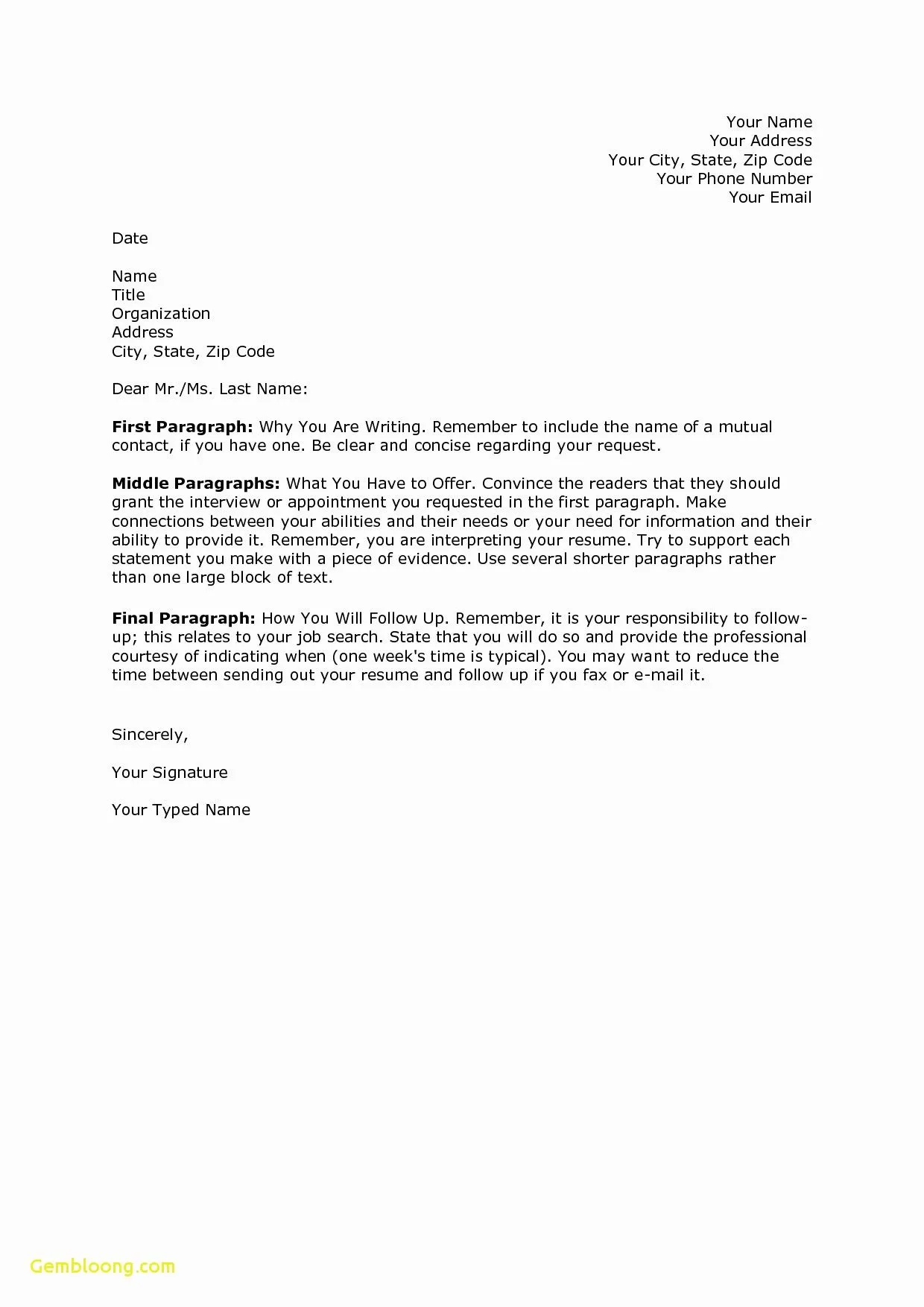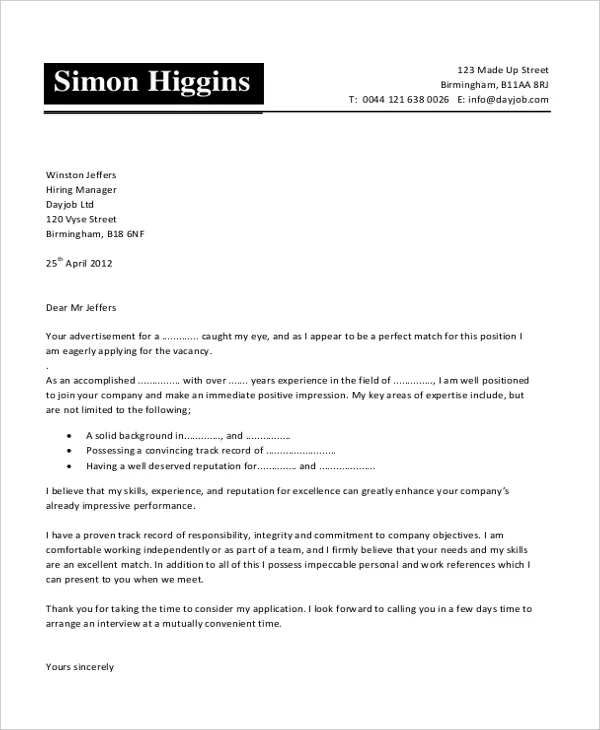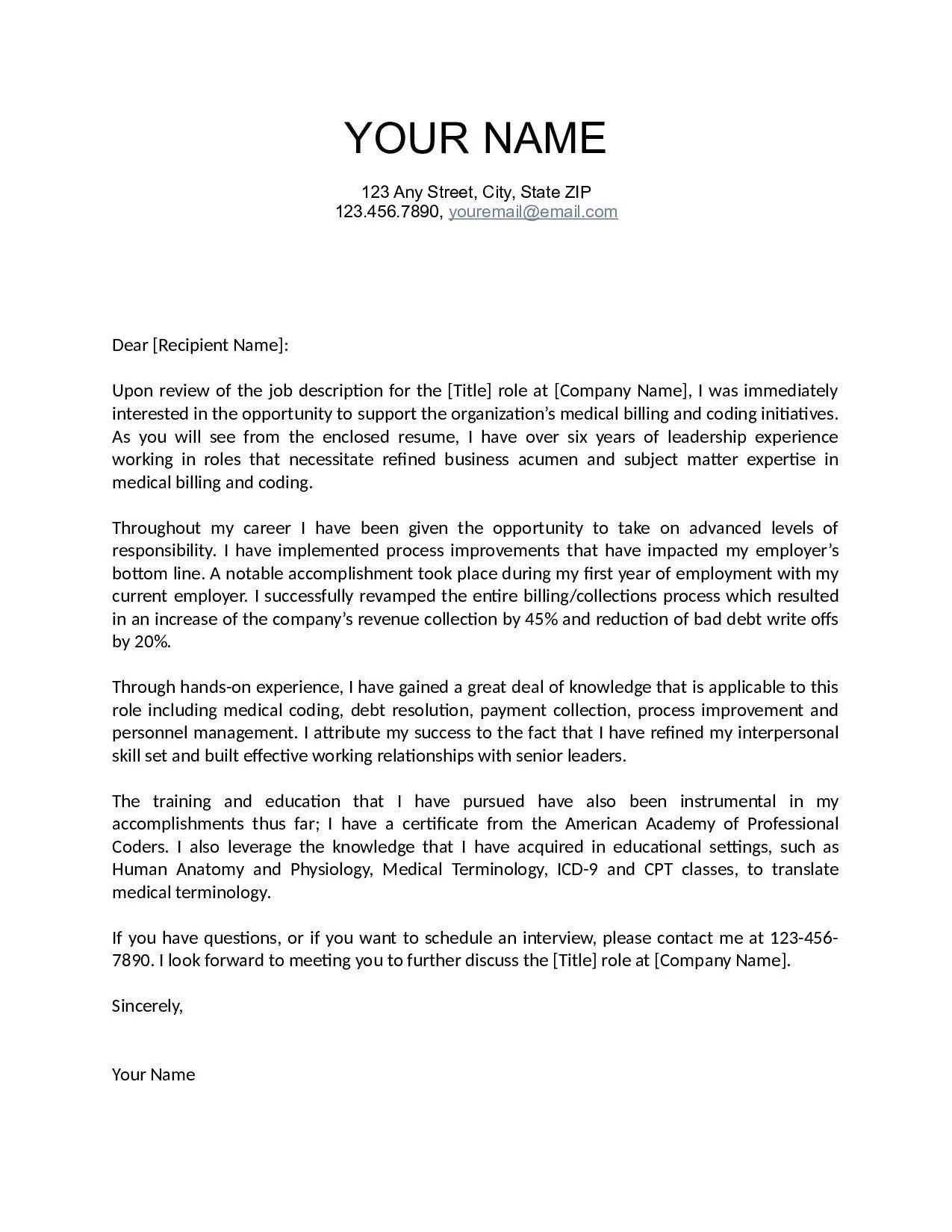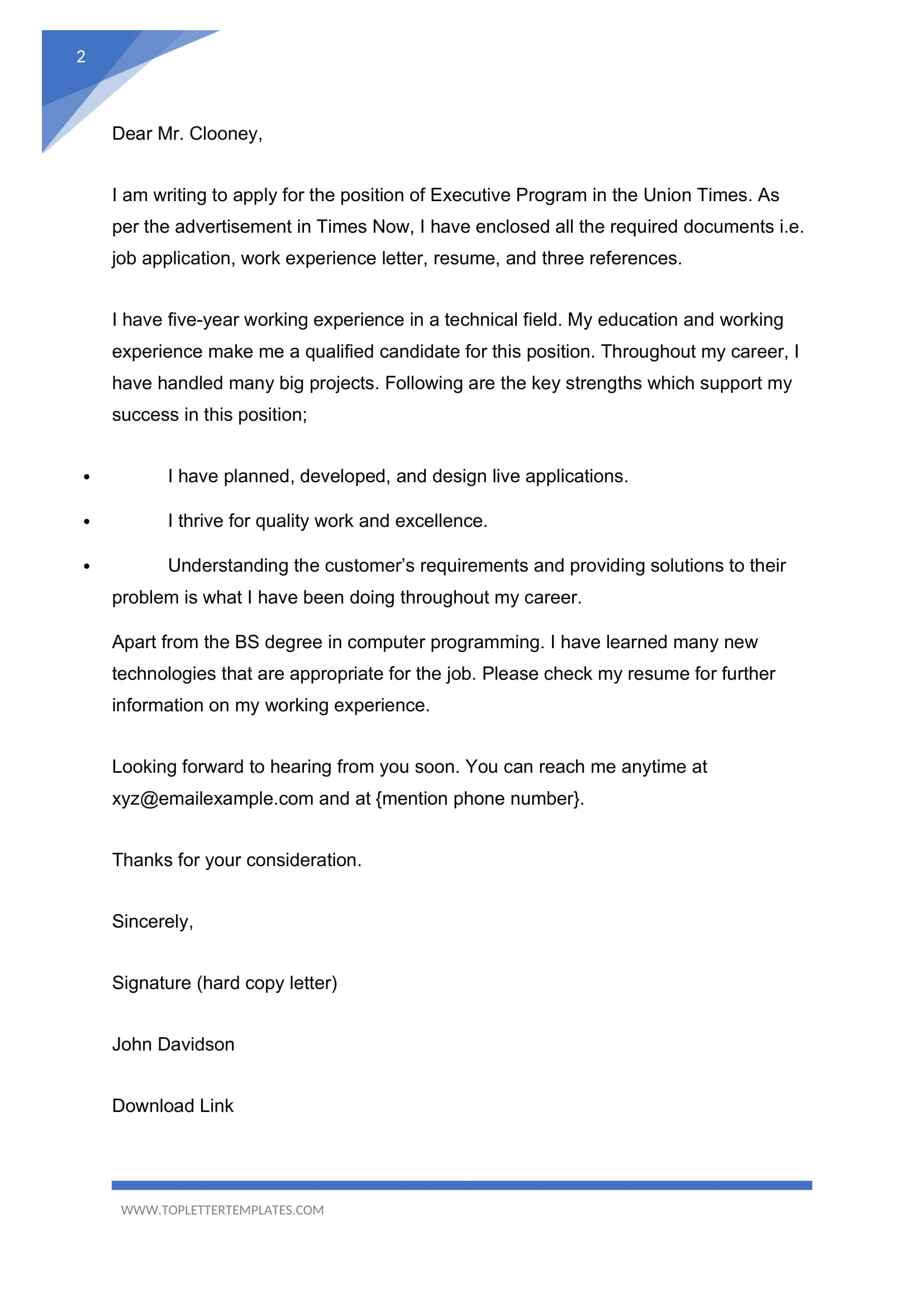Why a Cover Letter Matters
In the competitive job market, a cover letter is your first opportunity to make a lasting impression on a potential employer. It serves as more than just a formality; it’s your chance to introduce yourself, showcase your personality, and highlight the skills and experiences that make you the ideal candidate for the role. A well-crafted cover letter can significantly increase your chances of landing an interview by demonstrating your genuine interest in the position and the company. It provides context to your resume, allowing you to elaborate on your qualifications and explain how they align with the job requirements. Furthermore, it shows that you have taken the time to tailor your application specifically to the role, setting you apart from generic applications. The cover letter acts as a bridge connecting your skills and experience to the employer’s needs, thereby showcasing your suitability and enhancing your application’s effectiveness. Properly written, it’s your personal marketing document to get the interview.
Grabbing Attention with Your Cover Letter
The opening of your cover letter is crucial. It should immediately grab the reader’s attention and compel them to continue reading. Instead of starting with a generic phrase, try a compelling hook that reflects your understanding of the company or the role. You can also use a short, impactful anecdote or a statement that highlights your most relevant skill or achievement. This initial engagement is critical to setting the tone for the rest of the letter. Show genuine enthusiasm. Start with a brief, powerful statement showcasing what makes you the right fit. Avoid clichés. Keep it concise, professional, and tailored to the specific job. Make sure it reflects the core values and mission of the company to prove your interest and knowledge. Make sure the first paragraph is a strong statement of purpose.
Highlighting Relevant Skills

A cover letter should go beyond simply restating the information in your resume. Instead, it should highlight the skills and experiences most relevant to the job you’re applying for. Identify the key requirements listed in the job description and carefully select the skills and experiences you possess that align with these requirements. Provide specific examples of how you’ve successfully used these skills in the past. Use the STAR method (Situation, Task, Action, Result) to provide concise and impactful examples. This demonstrates your practical experience and ability to deliver results. Remember to tailor the examples to reflect the requirements of the role and to showcase your understanding of the company’s needs. Make sure the skills shown are not only hard skills, but soft skills as well, highlighting teamwork abilities and communication.
Tailoring Your Cover Letter to the Job
Generic cover letters are easily identified and often discarded. The key to a successful cover letter is personalization. Before you start writing, thoroughly research the company and the specific role. Understand their mission, values, and the challenges they face. Demonstrate your understanding of the company and the role by tailoring your cover letter to match their needs. Show how your skills and experiences align with the specific requirements outlined in the job description. Mention the company’s accomplishments or values, demonstrating that you have taken the time to learn about them. This level of personalization shows your genuine interest and increases the chances of your application standing out. It demonstrates your commitment to the opportunity, creating an impression of dedication.
The [Top 5] Cover Letter Secrets Revealed!
Secret 1: Research the Company

Thorough research is the foundation of an effective cover letter. Before writing, explore the company’s website, social media, and recent news articles. Understand their mission, values, and current projects. This knowledge allows you to demonstrate your understanding of the company and tailor your letter to their specific needs. Identify the key challenges the company faces and consider how your skills and experiences can help address them. Mention specific aspects of the company that resonate with you, showcasing your genuine interest. Use keywords from the job description and align your skills with the company’s needs. Research also provides valuable insights to reference within your letter, allowing you to show how your goals align with their objectives. Demonstrating your knowledge makes your application stronger.
Secret 2: Show, Don’t Tell
Instead of simply stating your skills, illustrate them with concrete examples. This makes your claims more credible and memorable. Use the STAR method (Situation, Task, Action, Result) to provide detailed context. Describe the situation you were in, the task you had to accomplish, the actions you took, and the results you achieved. Quantify your achievements whenever possible. Use numbers and data to demonstrate the impact of your work. This helps employers understand the real value you bring to the table. Show, don’t tell, creates a compelling narrative that convinces the employer of your capabilities. The most effective cover letters are not a list of accomplishments but a story of how you solved problems, added value, and contributed to a positive outcome. Remember to use action verbs.
Secret 3: Quantify Your Achievements
Numbers speak louder than words. Whenever possible, quantify your achievements to demonstrate the impact of your work. Use data to illustrate your successes. Instead of saying you ‘improved customer satisfaction,’ state that you ‘increased customer satisfaction scores by 15%’. Quantifying your accomplishments gives employers a clear understanding of your value and the results you have delivered in the past. It provides concrete evidence of your capabilities and allows them to assess your potential impact. When describing your achievements, include relevant metrics like percentages, numbers, or specific financial figures. This adds credibility and makes your application more compelling. Make sure the information is accurate, and align the achievements with the requirements of the role.
Secret 4: Perfect the Tone

The tone of your cover letter should be professional, enthusiastic, and tailored to the company’s culture. Avoid overly casual language or jargon. Show enthusiasm for the role and the company, but avoid being overly familiar or informal. Use positive and assertive language, and highlight your confidence in your abilities without being arrogant. The best tone will reflect your personality. Make sure the tone is appropriate for the industry and the specific job. A well-crafted tone reflects your professionalism and allows you to connect with the hiring manager. Consider the company’s voice and match your tone accordingly to highlight your personality and fit within the company.
Secret 5: Proofread Meticulously
Typos and grammatical errors can immediately disqualify your application. Proofreading is a crucial step in the cover letter writing process. Carefully review your cover letter for any errors in grammar, spelling, punctuation, and formatting. Read it aloud to catch awkward phrasing or unclear sentences. Ask a friend, family member, or career counselor to review your letter for any mistakes you might have missed. Pay close attention to the details. Ensure the information is correct and the formatting is consistent. A well-proofread cover letter shows attention to detail and reflects your professionalism. This final step is essential to make sure your application makes the best possible impression.
The Structure of a Winning Cover Letter
Header and Contact Information

Your cover letter should begin with a professional header that includes your contact information, such as your name, phone number, email address, and LinkedIn profile URL (if applicable). Include the date and the hiring manager’s name and title (if known) and the company address. This ensures the hiring manager can easily contact you. Use a clear and professional font and formatting for easy readability. Make sure your contact information is accurate and up-to-date to guarantee the employer has all the necessary information. Ensure it is consistent with the details on your resume. Be certain you have an email address that is professional. Make the information easy to find.
Greeting and Introduction
Start with a professional greeting, such as ‘Dear Mr./Ms. [Last Name]’ if you know the hiring manager’s name. If not, use a general greeting such as ‘Dear Hiring Manager’. The introduction is your first opportunity to make a strong impression. State the position you are applying for and briefly mention how you learned about the opportunity. Include a brief statement about your key skills or experience that align with the job requirements, showcasing what makes you the ideal candidate. This sets the tone for the rest of the letter and captures the hiring manager’s attention from the beginning. Your greeting should be personalized to make a professional impression.
Body Paragraphs
The body paragraphs are the core of your cover letter. They should highlight your relevant skills, experiences, and achievements. Elaborate on the information in your resume, providing specific examples and quantifiable results. Tailor each paragraph to the job description, focusing on the key requirements. Use the STAR method (Situation, Task, Action, Result) to provide context and illustrate your accomplishments. Break up large blocks of text with short paragraphs. This improves readability. Keep the paragraphs concise and focused, ensuring each statement supports your application. The body paragraphs provide essential information. This section should convince the employer that you are a great candidate.
Closing and Call to Action

In your closing paragraph, reiterate your interest in the position and thank the hiring manager for their time and consideration. Include a clear call to action, such as inviting them to contact you for an interview. This demonstrates your enthusiasm and makes it easier for them to take the next step. You can also mention your availability for an interview and express your excitement about the opportunity. End with a professional closing, such as ‘Sincerely’ or ‘Best regards,’ followed by your name. Make sure it’s concise and enthusiastic. Always express your interest and thank them for their time. Your closing will leave the last impression.
Common Cover Letter Mistakes to Avoid
Avoid common mistakes that can undermine your application. These include typos and grammatical errors, generic language, and a lack of personalization. Do not simply rehash your resume. Instead, provide additional context and highlight relevant experiences. Don’t use clichés, jargon, or overly casual language. Avoid negative statements or complaints about previous employers. Ensure your cover letter is clear, concise, and focused on the job requirements. Failing to tailor the letter to the specific role is a huge mistake. These errors can make your application seem unprofessional. Proofread every detail carefully.
